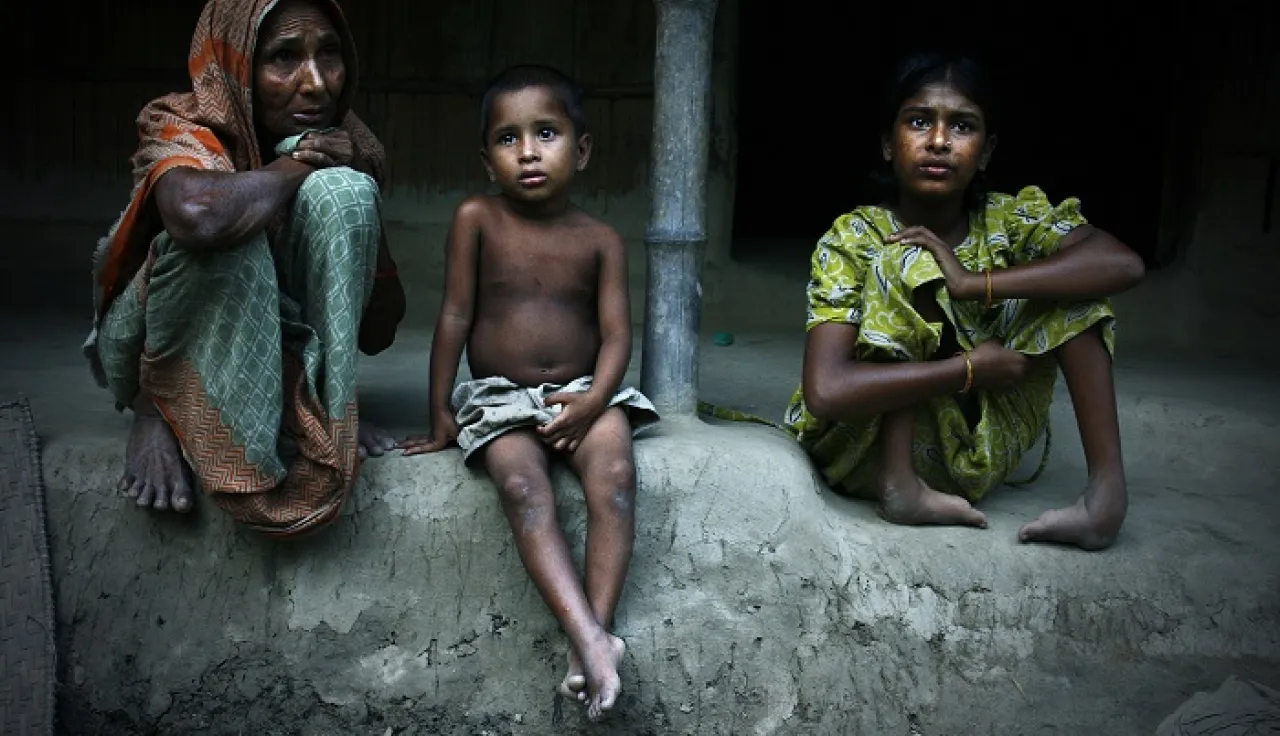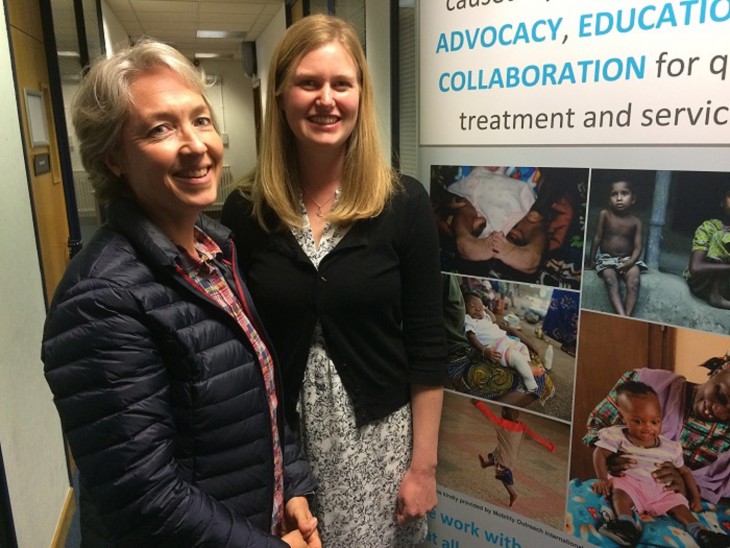Access for all: ICRC supports Global Clubfoot Initiative - Q&A

Clubfoot is a congenital deformity affecting nearly 200,000 children each year across the world. One or both feet are turned inward making it difficult to walk. It is estimated that 80% of those born with the condition live in low and middle-income countries, including in conflict zones, where treatment is either unavailable or ineffective. Complete treatment for one child can cost as little as US$150 and yet many communities lack the awareness or the funds to tackle the condition. As a result many young people face a lifetime of inequality, due to lost opportunities in education and employment.
Barbara Rau is a physiotherapist working in the ICRC's physical rehabilitation team, based in Geneva. She represented the ICRC at a recent London meeting of the Global Clubfoot Initiative, where Rosalind Owen is programme manager.
Why is the ICRC involved in efforts to try and eradicate Clubfoot?
Barbara: Our teams around the world help people with a wide range of physical disabilities. These people may live in conflict zones or might have been displaced because of past or present fighting. We see cases of clubfoot all too often. We can't just ignore it which is why we need to join other organizations working to try and eradicate it as a lifelong condition.
Also, we know there is a cure. If you treat affected children when they are babies, they can go on to live a normal life. That means going to school, getting a job and building a future without a disability. Many who don't get this treatment face a lifetime of inequality, and unnecessary obstacles placed in their way. Full and effective treatment can cost as little as US$150 for one child from start to finish, so it is affordable and achievable – as it already is in high income countries.
How is the ICRC getting involved in trying to help those with clubfoot across the world?
Barbara: We are trying to be involved in a number of ways. In some cases we are supporting other organizations already working to help children with clubfoot. This might mean providing materials, funding or training. Elsewhere, for example in Guinea Bissau, West Africa, we are working with a partner to develop a new project. At the other end of the scale in Afghanistan, we are running the entire clubfoot project ourselves. As is always the case at the ICRC, we assess the needs in different countries and try to respond accordingly.

ICRC medical staff help mothers and their babies with clubfoot in a clinic in Afghanistan. © Els Hekman
Tell us about the recent meeting which took place in London.
Barbara: The ICRC is a governing member of the Global Clubfoot Initiative (GCI), a not-for-profit collaborative consortium of individuals and organizations with technical and organizational expertise in clubfoot management. We meet online regularly but it is important to meet face-to-face whenever we can to discuss the key issues and we last did this two years ago.
Rosalind: We see Clubfoot as something that is completely treatable. The Ponseti method of treatment results in a cure – which means having a normal foot and a normal lifespan in over 90% of cases. In many countries this method is available as part of a national programme. Over 40 low and middle income countries have a national clubfoot programme in place. We had his meeting in London to take a global view and ask ourselves: how can we map out where the services are and where the gaps are and make sure within the next 15 years that those gaps are filled? One million children across the world live with untreated clubfoot so there is clearly much work to be done.
Why was it important for the GCI that the ICRC came onboard?
Rosalind: The ICRC has expertise and an operational presence in areas where none of the other organizations involved in the initiative are - conflict zones – reaching communities others can't reach, so that's of great value. There is also a broad approach and maturity that is really important. It gives the GCI a balance alongside our newer organizations that have been formed to treat clubfoot.
Barbara: It's great to be part of this initiative because as well as bringing our own experiences the ICRC can benefit from the knowledge and expertise of the other partner organizations. We can share tools and resources with them – and vice versa – to strengthen the overall global response.

ICRC physiotherapist Barbara Rau, left, and Rosalind Owen from the Global Clubfoot Initiative.
Raising awareness is key to any success the initiative will have?
Barbara: Yes because all too often this is an ignored condition. It is not always seen as a serious condition in places where life can be extremely challenging. For example, someone with clubfoot often can't compete for medical attention with someone who lost a limb during a conflict. Lack of awareness is key – in some communities parents don't come to the clinics because they just don't know that this can be cured. But provide them with information and medical resources and this mind-set can be changed. For example one of the clinics we support in Pakistan saw the number of users increase once the local community could see for themselves that children were being treated successfully.
Rosalind: Across the world, we need to spread awareness of the fact that there is low-cost treatment for this condition. Only in the last 30 years has this treatment become popular and in some countries where awareness is low do-it-yourself strapping techniques or even surgical solutions are more likely to be considered. Even amongst health workers in some countries where there isn't much knowledge and experience, that first referral is just not happening.
This meeting in London has been very worthwhile and we look forward to working with the ICRC on our 15-year plan to eliminate clubfoot as a lifelong disabling condition.



